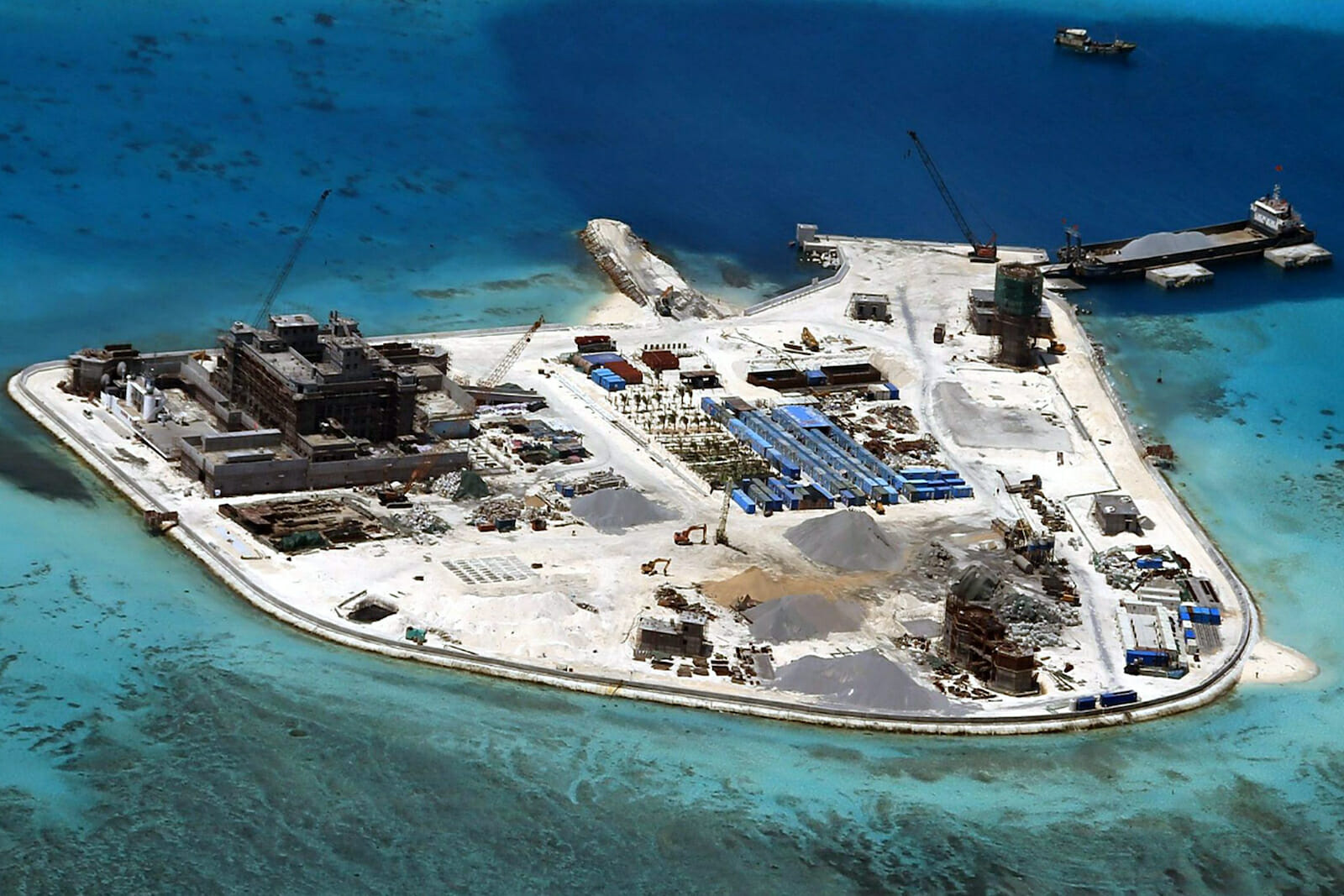
China has Almost Breached the First Island Containment Chain
China has long sought to break through the three island chains in order to expand eastward into the Pacific. This Chinese strategic naval policy is described as its “Island Chain Strategy.” This phrase was first used by John Foster Dulles in 1951 during the Korean War. While the phrase did not become part of conscious U.S. foreign and military doctrine, it has become something of an obsession with China. There are three island chains that China feels it needs to breach to allow its military free access to the Western and Eastern Pacific regions.
The First Island Chain
The first island chain consists of the Kuril Islands, the Japanese Archipelago, the Ryukyu Islands, Taiwan, the northern part of the Philippines Archipelagos, and the Malay Peninsula. The nations that are involved within the first island chain are Japan, South Korea, Taiwan, the Philippines, Indonesia, Brunei, Malaysia, Singapore, and Vietnam.
Prior to World War Two, the United States regarded its first line of defense from any aggressor as a line ranging from the Philippines, Guam, Hawaii and the Aleutian Island Chain off of Alaska. After World War Two and the defeat of Japan, the United States moved its defensive posture from its previous island chain to just off the coast of China.
China believes that in order for it to challenge the United States it first needs to break through the first island chain. China believes that in order to secure its sea border areas, it must eliminate the airbases the United States uses for its military that currently make up the threat to China from the first island chain.
In 1950, China attempted to break through the first island chain by threatening the independence of Taiwan, which it regards as a breakaway province of China, but was thwarted when the United States signed the U.S.-Taiwan mutual defense treaty in 1954. Unable to challenge the United States military, China backed off and until now has bided its time.
This treaty was later canceled after the United States, along with China, issued the 1972 Shanghai Communique, with the United States stating in its version of the Shanghai Communique that the United States recognized that Taiwan was a province of China, but that any reunification should be peaceful in nature. While the Shanghai Communique required the United States to abrogate its defensive treaty with Taiwan, the United States maintains close defensive ties with Taiwan, and is Taiwan’s main supplier of military equipment. The Shanghai Communique also agreed that each would not seek hegemon status in Southeast Asia.
Since the fall of the Soviet Union, and during the period of the United States misadventure in Iraq, China has seized the South China Sea through the construction of artificial islands, has militarized the South China Sea and in the process abrogated the Shanghai Communique of 1972. As of this writing, with the cancellation of the Visiting Forces Agreement between the United States and the Philippines, China is on the verge of breaking through the first island chain.
The strategic consequences of this to the United States could not be more serious. Typical refueling operations by the U.S. Air Force will have to be moved further north to keep the vulnerable tankers out of range of Chinese fighter aircraft. The U.S. Navy will have to take into consideration the vulnerability of its aircraft carriers to prevent them from coming under attack from land-based air assets as well as surface to surface missiles that could be stationed in the region.
The failure of the United States to honor its commitments to the U.S.-Philippines Mutual Defense Treaty will have far-reaching consequences.
The election of Rodrigo Duterte has marked a sea change in the relationship between the United States and the Philippines. This was evident when Perfecto Yasay Jr., the former foreign minister, stated that the Philippines was “no longer the little brown brothers of the United States.”
Since the seizure of the South China Sea by China, the United States has failed in its obligations to the Philippines under the Mutual Defense Treaty of 1951.
This is ultimately the issue that President Duterte has with the United States. The Economic Exclusive Zone which China has seized contains an estimated 11 billion barrels of oil and 190 trillion cubic feet of natural gas. With easy access to this mineral wealth, the Philippines would be transformed from a relatively poor country to a country full of riches, and portend a better life for the people of the Philippines. But with the illegal seizure of the South China Sea by China, and the refusal of the United States to honor its commitments to the Philippines, the United States is forcing President Duterte to seek an understanding with China. In his eyes, 60% of something is better than 100% of nothing.
Unless the United States steps up and honors its commitments to the Philippines, it will soon find itself on the outside looking in, and have its other allies not only question the reliability of the United States as an ally, but turn to China for their security needs.
And with an understanding with the Philippines, China will have achieved the first step of its goal of breaking through the three island chains it feels it needs to control to better enhance its national security.

